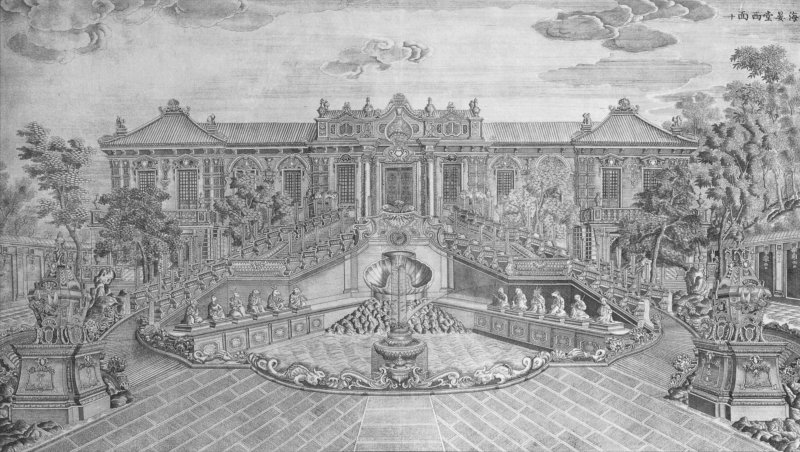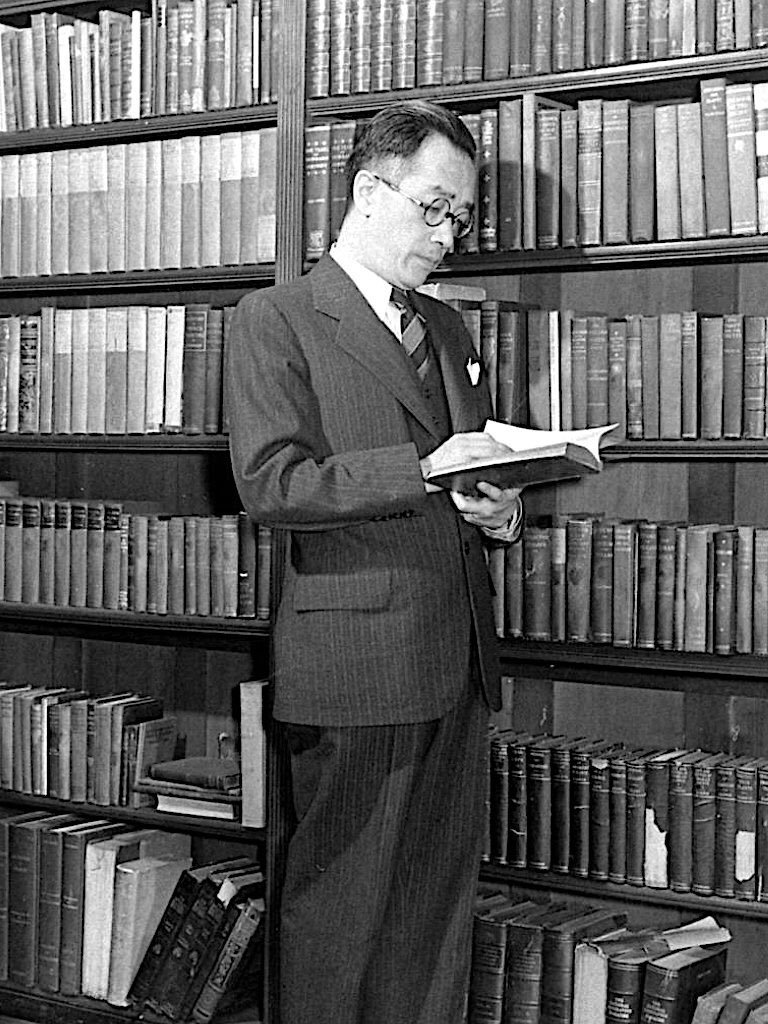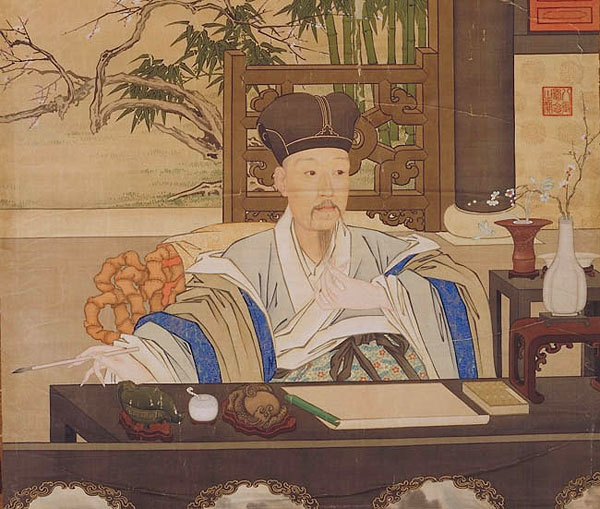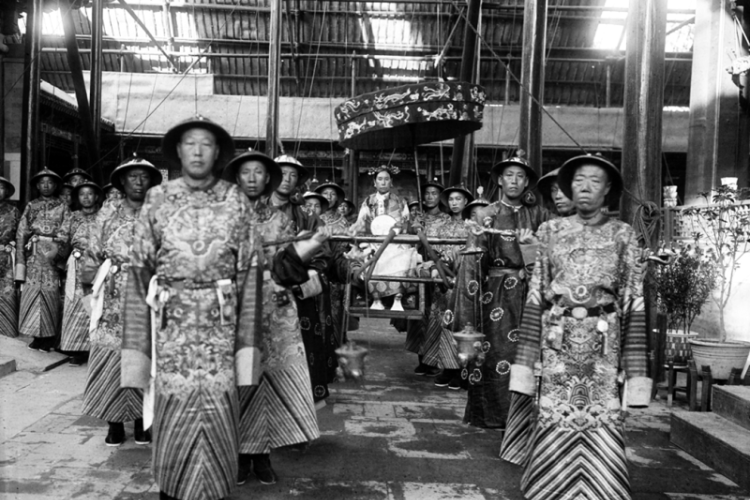Beijing Bunnies: Famous Beijingers Born in the Year of the Rabbit
It’s Spring Festival, even though the thermometer reads -10 outside the window. It’s also the year of the Rabbit in China, which has historically been a bountiful year for celebrities. Angelina Jolie, Lee Seung-gi, Quentin Tarantino, Kate Winslet, Sridevi Kapoor, and Johnny Depp represent the world of film, while “Team Rabbit” is well stocked with athletes including Michael Jordan, Novak Djokovic, and Tiger Woods.
Two emperors, Yelü Yanxi and Wanyan Sheng, were from Inner Asian empires with capitals in earlier versions of Beijing. In fact, not only were Yelü Yanxi (Emperor Tianzuo of the Liao Empire) and Wanyan Sheng (Emperor Taizong of the Jin) born in the same year (1075), but Wanyan Sheng led his Jürchens of Manchuria to war against Yelü Yanxi’s Liao Empire. In 1122, Wanyan Sheng’s armies forced Yelü Yanxi to flee the Liao capital in present-day Beijing.
After two years of campaigning, Wanyan Sheng finally caught his fellow Rabbit and made Yelü Yanxi, the last Liao Emperor, his captive. Yelü Yanxi lived another three decades as a prisoner of Wanyan Sheng’s new Jin Empire before dying in an ill-conceived escape attempt. The pagoda at the Tianning Temple, in the Xichang District, is one of the few remaining structures in Beijing from the time of the Liao Empire. The 57.8-meter tall tower was constructed of brick and stone and was completed in 1120, just a few years before Yelü Yanxi abandoned his capital.

Another Inner Asian people, the Mongols, subsequently toppled the Jin Empire in 1234. Kublai Khan, grandson of Genghis, moved his capital to present-day Beijing in 1271. To connect the Khan’s court with the canals and waterways of China and to provide water for the extensive new moats and lakes in the capital city, Kublai employed the talented Rabbit and math whiz Guo Shoujing (1231-1316).
Guo Shoujing collaborated with engineers and scholars from other parts of Kublai’s empire to build a series of reservoirs (including Kunming Lake at the Summer Palace) which fed canals that brought water into and through the city, ultimately emptying into the Tonghui Canal, which linked the capital with the Grand Canal and the sea. Many of these canals, moats, lakes, and waterways exist today. There is a shrine to Guo Shoujing at the northern end of Xihai, as well as a museum to Guo’s impressive achievements.

The Ming Dynasty is represented by Zhu Houcong, born in 1507, who reigned as the Jiajing Emperor from 1521 to 1567. An accidental emperor, Zhu Houcong, was summoned to Beijing to replace his cousin, the Hongzhi emperor, who had died without an heir. His ascension resulted in a bit of unpleasantness at court over lines of succession, posthumous adoptions, and who would be honored in the family rituals, all of which the Jiajing Emperor resolved through the time-tested method of having his enemies at court executed.
The Jiajing Emperor was also famous, some would say notorious, for his practice of esoteric rituals designed to, among other things, extend his life and enhance sexual prowess. Some of the palace women, tired of being used and misused by this Imperial Bunny, rebelled and nearly succeeded in strangling the Jiajing Emperor in 1542. The consort conspiracy was foiled, and many of the would-be bedroom assassins were executed.
The attempted strangling occurred in the Hall of Heavenly Purity (Qianqinggong) in the Forbidden City. Legend has it that the Jiajing Emperor was so freaked out by what happened he never slept in that hall again.

Perhaps the most famous Imperial Rabbit was the Qianlong Emperor of the Qing Dynasty, born in 1711 in a palace which later became Yonghegong Temple.
The Qianlong Emperor reigned officially for 61 years before “retiring” in 1796. He is famous for his renovations, and most of the current incarnations of Beijing’s best-known landmarks are products of his reign, including large sections of the Forbidden City, Beihai Park, the Temple of Heaven, and Yonghegong.
The Qianlong Emperor expanded the imperial Summer Palaces and ordered the construction of the “Western-style Buildings,” the ruins of which still grace the northeastern corner of the Yuanmingyuan/Old Summer Palace.

While the scholar Hu Shih was born in Shanghai, it was during his time at Peking University that he made some of his most important contributions to the development of education, language, and literature in China. Hu Shih began his tenure in 1917 and was affiliated with the university until 1949, eventually serving as dean and then Chancellor.
Hu Shih also served as Ambassador to the United States from the Republic of China during the critical war years of 1938 to 1942. Hu Shih was one of the foremost advocates of writing in baihua, vernacular Chinese, as opposed to the classical language, and was part of a literary revolution that opened the door for new forms of cultural expression in the first decades of the 20th century.
The former administrative building of Peking University, known as Honglou (“Red Building”), located just to the west of Jingshan Park and the north gate of the Forbidden City, has a museum which, despite recent renovations, is still an excellent place to learn more about Hu Shih and his role in the New Culture/May Fourth Era.

Any post about Beijing-adjacent bunnies needs to mention the captain of our team of Rabbit Athletes: David Beckham. After David Beckham brought his talents to Real Madrid in 2003, his debut with the Spanish side was a pre-season trip through Asia.
Your correspondent went to the Real match at the old Worker’s Stadium that summer when it can be safely reported, people in Beijing were losing their minds. Beckham-mania swept the city. There were even rumors staff at the Real hotel used scissors to cut Beckham-graced bedsheets into tiny squares to sell as souvenirs.
Happy Year of the Rabbit. Can somebody now tell spring that we’re having a festival in its honor and to hurry the hell up and get here?
Jeremiah Jenne earned his Ph.D. in Chinese history from the University of California, Davis, and taught Late Imperial and Modern China for over 15 years. He has lived in Beijing for nearly two decades and is the proprietor of Beijing by Foot, organizing history education programs and walking tours of the city, including deeper dives into the route and sites described here.
READ: Story of the 'Jing: A History of Commerce at Longfusi
Images: Wikicommons, Jeremiah Jenne




